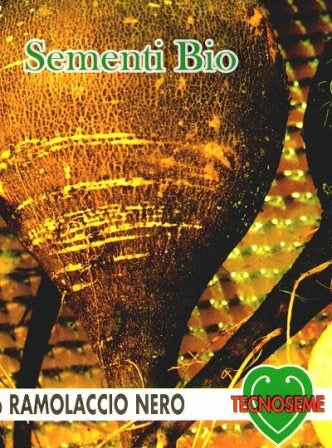Scientific name: Raphanus raphanistrum L.
Family: Brassicaceae
Brief history and botanical notes on the plant
Present throughout Italy, belonging to the Crociferae family, genus Raphanus, also known by the name of wild radish, wild ramilaccio, ramiraccio. The term “ramoraccio” is used in dialect, but it is the same that according to Mattioli was used since 1500 also in Rome, while the term ramilaccio can create confusion because it is also used to identify the other spontaneous plant, the “common radish ” (Raphanus sativus), also present in nature in the spontaneous state, which differs from the radish because it has an elongated or rounded, edible root, and from which the cultivated radish is then derived.
The edible part of the rake is mainly represented by the leaves and florets, in some areas called "macchietti", which were used for wild salads. The rake is widespread throughout the Italian territory, from sea level up to approx. 1000 m altitude, grows infesting herbaceous crops in general; it is found in tree-lined areas, in uncultivated areas and often near fountains. In some areas this plant is also identified with the name horseradish, which can cause confusion, since horseradish (or horseradish) is a completely different plant, which Gaertner classified in the Armoracia genus.
Botanical characteristics Annual herbaceous plant, up to 80 cm tall, slightly hairy, much branched and bristly, with a slender, thin root and lyrate-pinnate-seven lower leaves with a widened terminal segment, the upper ones oval-lanceolate, toothed. From March to June, it produces white flowers, tinged with violet. The fruits are siliques with typical constrictions between one seed and another.

Pedoclimatic needs
The ramilaccio has a great power of adaptation which makes it easy to grow even in different climatic and soil conditions. In general, for its development, ramilaccio prefers cool climates and fertile soil, while it can suffer from severe drought; it is better to provide periodic watering, while avoiding water stagnation, which is harmful to most plants.
Sowing and transplanting times
Sowing can be carried out in the summer period, until late August, making sure that the different seedlings have enough space to grow in the ground without suffocating each other: it is therefore better to maintain a distance of at least fifteen cm between one seed and another.
Processing
During the growth phase, periodic hoeing is necessary to eliminate weeds and correct transpiration of the soil, which directly influences the quality of the final product itself.
Fertilization
Organic fertilizer can be a valid resource, provided that it does not contain nitrogenous elements in large quantities, which can cause root breakage. In this regard, heap products with an optimal C/N ratio are excellent.
Cultural care
Regular watering in the summer, thinning and weeding aimed at containing weeds.
Associations
It is useful to combine borage with the tomato (it acts against certain parasites and supports growth), it keeps parasites away from kohlrabi and other cabbages. Its proximity is also beneficial with courgettes.
Adversity
Crop hardly affected by animal parasites and fungal diseases, it is useful to distribute nettle macerate against aphids
Production and collection
The harvest takes place when the roots are ripe, taking care not to exceed the moment of maximum growth too much to avoid the flavor being affected or damaged in some way. The roots can weigh more than 100 grams.
Food uses and nutritional values
From the point of view of the benefits linked to regular intake, ramilaccio can be a useful element in the diet as it is rich in vitamin B, beneficial for the body. In any case, ramilaccio can also be consumed to mitigate symptoms and disorders: thanks to the substances present within the ramilaccio, it is possible to use its extracts as a diuretic, spasmolytic and analgesic. It can also prove extremely effective for kidney-related disorders, particularly renal colic.
It is also used to combat sleep-related disorders, while originally it was also used as an aid for fishing, as it is rich in ichthyotoxic substances which however are not harmful to humans, who can consume the fish thus caught without running into risks. However, consumption must be kept under control, as taking it in large doses or for prolonged periods of time can lead to excessive drowsiness.
Biodynamics
Preparation 500 distributed before and after sowing, subsequently it can be applied periodically with preparation 501 and nettle macerate.
Using the Biodynamic Calendar:
If you choose to reproduce the Ramolaccio through seed, sowing must be done with Luna in an Earth constellation.



